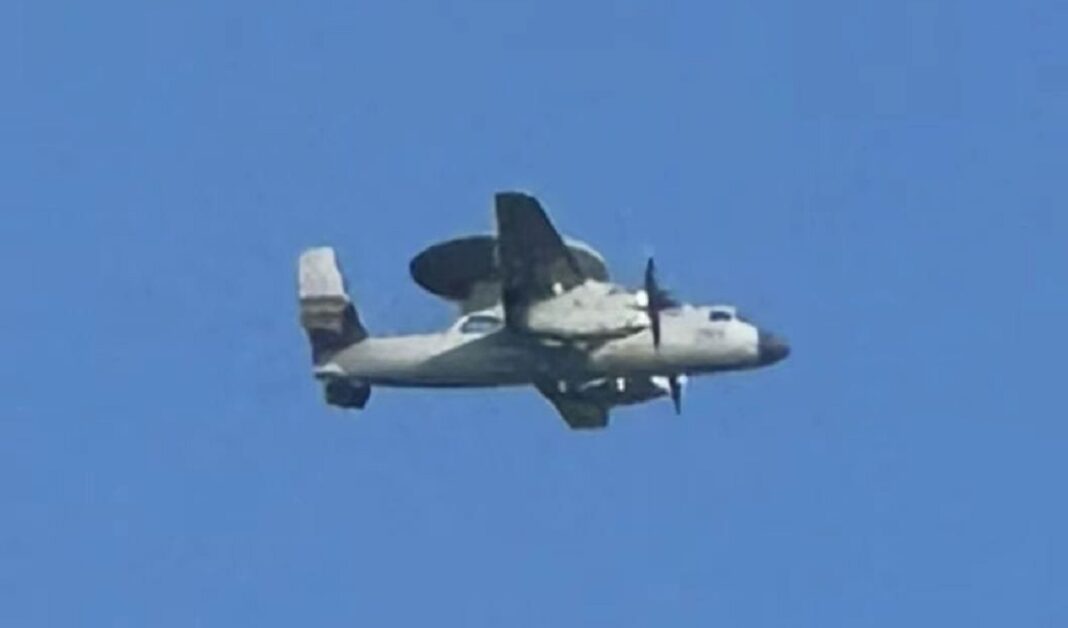One of the best images obtained so far of the Xian KJ-600, the future airborne early warning and control (AEW&C) aircraft China is developing for its conventional take-off and landing aircraft carrier, recently emerged on Chinese social media.
The People’s Liberation Army Navy (PLAN), which is seeking to compete for dominance of the Pacific theater with the U.S. Navy. is close to commissioning its third aircraft carrier, the Type 003 «Fujian», which is the first to be designed and built entirely in China and the second to use electromagnetic catapults for conventional take-off of its aircraft, or CATOBAR (Catapult Assisted Take-Off But Arrested Recovery).
CCTV Military showed an animation of how the KJ-600 fixed-wing carrier-based early warning aircraft wpuld take off helped by electromagnetic ejection on the ????????PLAN Fujian Type 003 aircraft carrier
(via wb/单手搓核弹) pic.twitter.com/V3wk4LDx6W— Jesus Roman (@jesusfroman) June 18, 2023
Its formidable carrier air wing will be composed of the J-15 «Flying Shark» for air superiority, the J-35, as a low-detectability multirole combat aircraft, helicopters for anti-submarine warfare and the KJ-600, which, like the American E-2 Hawkeye, will have the task of being the «eyes in the sky» of the Chinese carrier task force.
See also: Pakistan formalizes interest in Chinese J-31/FC-31 “Gyrfalcon” stealth fighter

KJ-600, the Chinese Navy’s AEW&C
The flight of the first prototype of the Xian KJ-600 reportedly took place at the end of August 2020. The images that emerged of it from the controlled Chinese social networks have been scarce and of poor quality.
However, as the launch date for China’s first CATOBAR aircraft carrier approaches, the sporadic frequency of KJ-600 photographs becoming public seems to be accelerating. The image below is one of the best and clearest of those that have emerged so far.
As it seems, this is one of the so far best and «clearest» images of the KJ-600 carrier-borne AEW.
(Image via @李明潇 on FB) pic.twitter.com/wtuhYa5Yx0
— @Rupprecht_A (@RupprechtDeino) January 13, 2024
As can be seen in this and other photographs published some time ago, the KJ-600 is equipped with a large AESA airborne and surface search radar, whose single phase antenna is located on a large rotating radome on the fuselage of the aircraft. Logically, it will also be equipped with other passive detection systems, self-protection equipment, as well as advanced secure communication and data link systems.
Clearer Img of KJ-600 Prototype 7106 pic.twitter.com/iwk4dCnAGi
— David Wang (@Nickatgreat1220) May 8, 2023
Its functions will be to extend the range of the fleet’s air defense detection capability, as well as to increase the carrier task force’s situational awareness, management, and command & control over the battlefield for offensive and defensive carrier task force operations.






